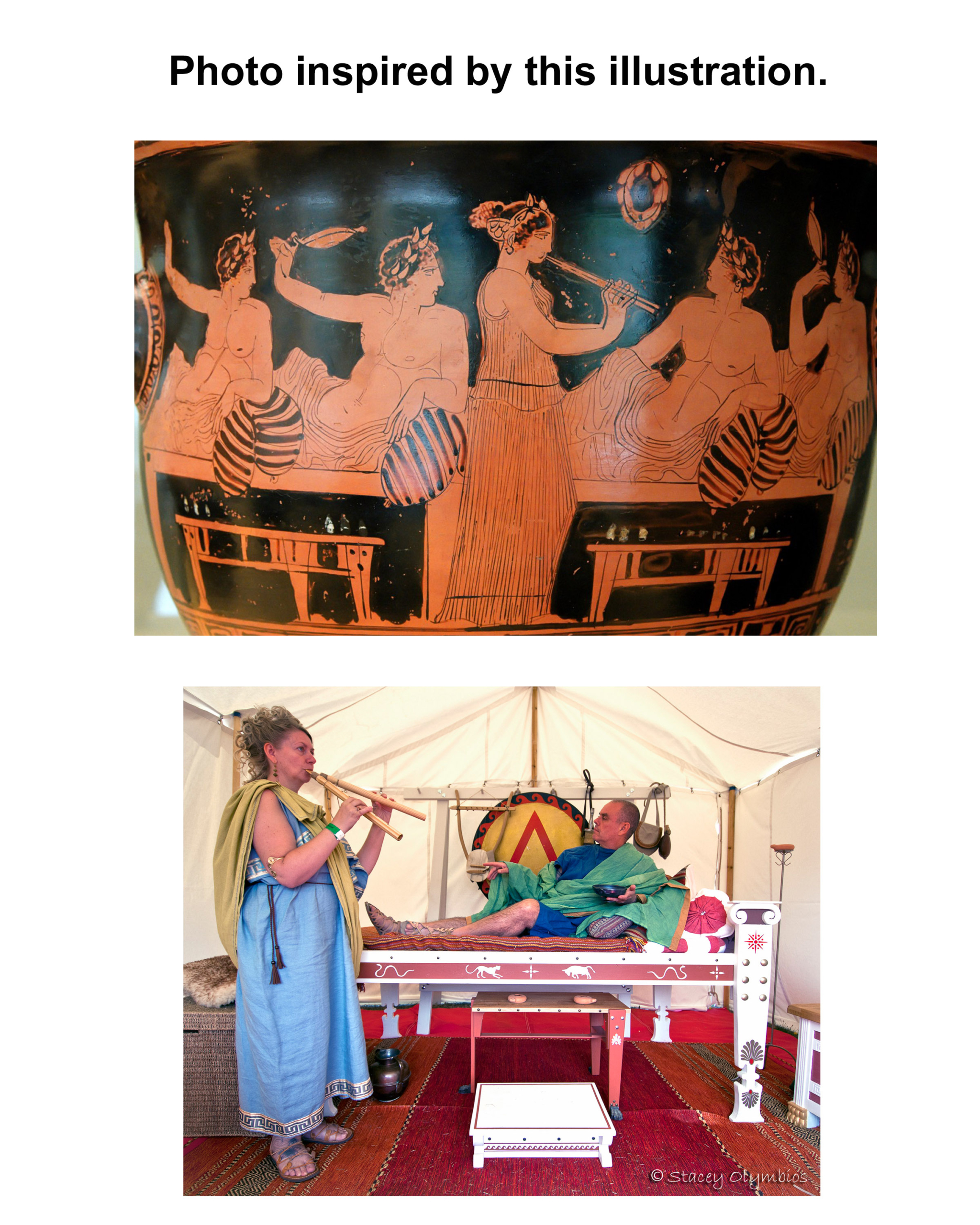Some representations of historical scenes from Ancient sources.

The farewell scene of a warrior departing to battle is a frequent subject of Attic vases in late Archaic and Classical Greece, indicating a significant preoccupation with war and military service during this period.
These departure scenes have been understood to reflect two of the most important events in the life of a young Athenian man: his departure as a hoplite leaving for battle, as in this illustration; or the departure of an ephebe for training and military service as indicated by his lack of beard and armour.


Symposium scenes on ancient Greek pottery typically depict gatherings of men drinking, eating, and engaging in conversation or entertainment at a symposium, which was a social event in ancient Greece. These scenes often show men reclining on couches, with a servant pouring wine from a krater (a large, two-handled vase) into their cups. The men may also be playing music or engaging in other forms of entertainment, such as storytelling or games. Symposium scenes on pottery were popular in ancient Greece, and they provide a glimpse into the social customs and daily life of the time.

Orpheus, the best known of the mythical musicians, is associated with Thrace in the northernmost part of Greece. After he had descended into the underworld to find his beloved wife, Eurydice, and had lost her, he withdrew into solitude. Feeling rebuffed, Thracian women set upon Orpheus and killed him. Here he is shown seated on a rock formation and engrossed in his music. The central figure, wearing typical Thracian dress, identifies the setting, while the woman who holds a sica (a typical Thracian weapon) in her left hand foreshadows Orpheus’s fate.



